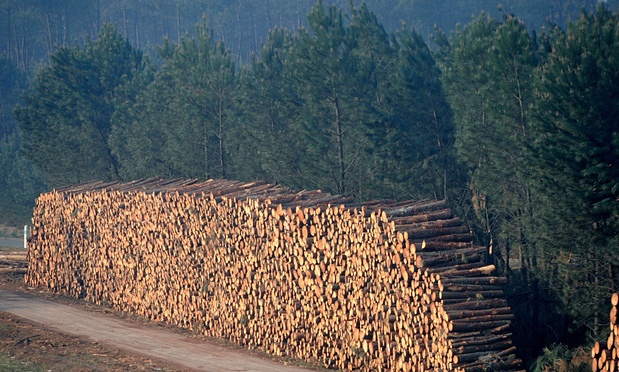Over the past two decades, the United States and Europe, and especially the United Kingdom, have shifted away from the use of coal for electricity generation. The closure of over 340 coal plants in the U.S., and its rapid fall in usage in the U.K. are often shown as examples of how we can quickly shift towards cleaner alternatives and reduce greenhouse gas emissions.
But, at least in the case of the U.K., the alternative, it turns out, isn’t that much better, especially from a climate perspective. The U.K. is now the biggest burner of wood biomass for electricity, with several formerly coal-firing power plants now burning wood pellets, emitting nearly as much CO2 as coal. The source? One area is the southeastern United States, where companies like Enviva have set up wood pellet factories and export facilities, aiming to supply not only the U.K., but also Europe, Japan, and South Korea as those regions transition away from coal.

“Because of all the commitments to net zero that many countries are making, they’re seeing biomass energy as some sort of component of that,” said Peg Putt, coordinator of the Forests, Climate and Biomass Energy Working Group at the Environmental Paper Network, who are concerned about the push to burn wood for electricity generation.
The companies pushing for increased use of wood biomass see it as part of the solution, both for forest owners, and transitioning away from coal. Coal-fired power plants can, relatively quickly, be converted to burning wood biomass, making it a quicker alternative than renewables like wind and solar, which can take far longer to bring online. In fact, the biggest wood biomass burning plants in the world, run by Drax in north England, used to be coal plants.
“We believe that bioenergy is a vital part of an all-in strategy to reduce carbon emissions and displace coal,” said Kim Cesafsky. director of sustainability at Enviva at a press conference. “Scientists and leading authorities on climate have all concluded that bioenergy is an essential part of the climate solution.“
But is burning wood really better? Science, as we know, is often evolving. A cautionary tale might be the expansion, in the 2000s, of biofuels as an alternative to petroleum. Both corn-based ethanol and palm oil-based biodiesel were seen as climate solutions because they came from plants, which absorbed as much carbon as was emitted when they were burned, making them carbon neutral. It’s a similar argument being put forth by the bioenergy industry, which claims that forests will regenerate fast enough to offset any emissions from burning wood.
But, as it turned out, biofuels’ climate impact was more complicated. When other factors were considered, such as transport emissions, land-use change, and peat emissions, it turned out that not only were biofuels not carbon neutral, they were, in many cases, responsible for more emissions than the fossil fuels they replaced. Wood biomass, Putt argues, is the same.
“Treating burning wood from the world’s forests as anything other than another source of carbon pollution that damages forest carbon storage [is] a false climate solution,” said Putt “Claims that burning forest wood is sustainable would be laughable if policymakers were not so prone to falling for biomass industry propaganda.”
Enviva argues that it only uses debris and low-quality wood, but Derb Carter with the Southern Environmental Law Center says that’s not what his organization, and allies, have found.
“We investigated that with some of the organizations we work, and verified that the primary emphasis then, as it is now, is utilizing whole trees to supply the biomass,” said Carter. There are allegations that clear-cutting of forests is becoming increasingly common as Enviva seeks to expand wood pellet production for export, and if so, means the environmental impact is far greater than is being advertised.
In fact, the science on wood biomass’s climate impact remains uncertain, though the industry will have you believe that the issues that plagued palm oil and corn biofuels don’t apply to their industry. At the same time, is using wood biomass instead of coal really the optimal solution? Shifting away from coal is good, as it is the most polluting and climate-intensive fossil fuel, but “less bad” doesn’t make biomass an ideal solution. There are real clean energy solutions – solar, wind and geothermal – that can play a bigger role with more focused government and private sector support.
There is some action on this front, as last month, Drax was dropped from an index of green energy firms, showing that climate financiers, at least, are no longer willing to accept burning wood as green energy. In Japan, seen as a future growth market as it aims to shift away from coal, a new coalition is pushing against biomass imports, citing concerns about its environmental impact on forests and greenhouse gas emissions.
We need to continue to shift away from coal as quickly as possible – but make sure that the alternatives are also better for the planet and people too. Increasingly, wood biomass doesn’t seem like the green solution it has been advertised as, like palm oil and coal biofuels before it.
